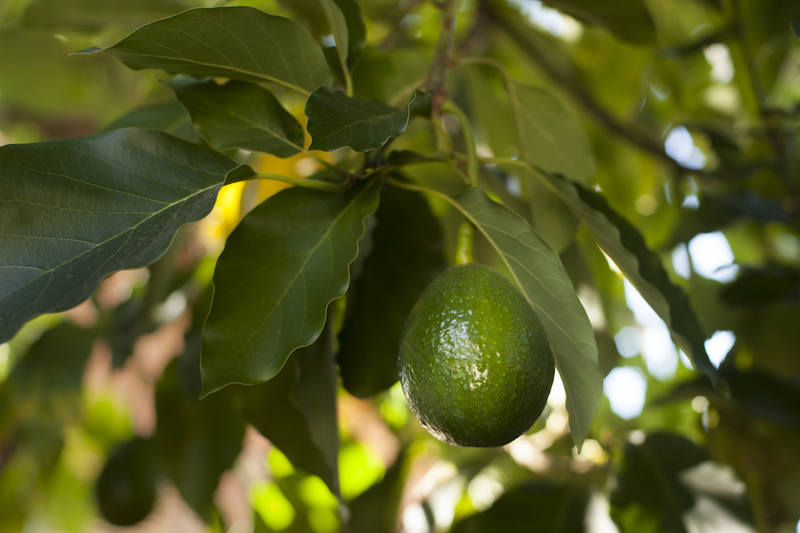How to Choose Plants That Complement Your Home's Architecture
Creating harmony between your home's architecture and your garden is both an art and a science. Landscaping isn't just about planting the prettiest flowers or the largest trees; it's about selecting plants that complement your home's architecture to create a cohesive and visually appealing outdoor space. This article will guide you through the process of choosing plants that enhance your home's unique structure--whether it's modern, traditional, Mediterranean, or cottage-style--ensuring your landscape looks intentional, balanced, and beautiful.
Why Is Plant Selection Important for Home Architecture?
Choosing plants that harmonize with your home's architecture significantly impacts your property's curb appeal and overall atmosphere. Well-chosen landscape plants:
- Emphasize architectural features, such as doors, windows, and rooflines.
- Soften hard or austere architectural lines.
- Add color, texture, and scale to complement your home's proportions.
- Establish a welcoming, unified look that increases property value.
Whether you own a stately colonial, a sleek contemporary home, or a rustic cottage, thoughtful plant selection can reinforce design elements and create seamless transitions between built and natural environments.

Understanding Your Home's Architectural Style
Before diving into plant selection, it's essential to identify your home's architectural style. The style will guide the forms, colors, and textures that will work best. Here are some major architectural styles and their typical landscape characteristics:
- Modern/Contemporary - Clean lines, minimal ornamentation, often with monochromatic palettes and large glass windows.
- Traditional/Colonial - Symmetrical layouts, balanced windows and doors, brick or clapboard exteriors.
- Mediterranean/Tuscan - Stuccos, arches, terracotta roofs, warm earthy colors.
- Cottage/Craftsman - Quaint, cozy, lots of texture, often with exposed woodwork and inviting porches.
- Mid-Century Modern - Horizontal lines, integration with nature, open floor plans, floor-to-ceiling windows.
Observe Proportions and Layout
Scale and proportion are crucial when selecting plants. Large, grand homes may need bigger specimen trees or bold groupings of shrubs, while smaller cottages benefit from delicate perennials and compact bushes. Consider the following as you analyze your home's "personality":
- Symmetry vs. Asymmetry: Colonial homes often call for symmetrical plantings, while contemporary styles embrace more freeform arrangements.
- Materials: Stone, brick, stucco, or wood can influence plant choice color and style.
- Color Palette: Muted, natural tones or bold, contrasting shades?
How to Choose Plants That Match Your Home's Design
Once you understand your home's architecture, the next step is to choose plant varieties that enhance and echo those design elements. Here's how to approach it:
1. Coordinate Plant Shapes and Architecture Lines
Observe the geometry of your house. Are lines straight and sharp, or curved and soft? Match those visual elements with plant forms:
- Rectilinear or angular homes (like modern or mid-century styles) pair well with plants that have architectural lines such as boxwoods, yews, ornamental grasses, and spiky succulents.
- Traditional or cottage-style homes benefit from rounded, full plants such as hydrangeas, azaleas, and roses, which soften facades and create a welcoming feel.
- Mediterranean designs with arches and stucco work harmoniously with lavender, olive trees, rosemary, and citrus.
2. Play with Color to Complement or Contrast
The color of your home should inform both flower and foliage selections. Consider:
- Monochromatic homes: Add seasonal interest and warmth with bold blooms like daylilies, tulips, and black-eyed Susans.
- Brick or warm-toned exteriors: Choose plants with cool-toned flowers and foliage (blues, silvers, soft greens) for balance.
- Gray or dark exteriors: Bright yellows, whites, or reds offer dramatic contrast and brightening effects.
- *Match or subtly contrast your plant colors with the trim or accent colors of your home for a tied-together look.*
3. Think About Texture and Density
Texture isn't just a tactile experience; it's also visual. Finer-textured plants (like ornamental grasses or ferns) provide a wispy, contemporary feel, while coarser-textured plants (think large-leafed hostas or bold shrubs) bring structure and solidity.
4. Work with Architectural Features
Enhance specific features with complementary plants:
- *Frame doorways and windows* with columnar shrubs or climbing vines.
- *Soften fence lines and walkways* using tiered perennial borders.
- *Guide the eye to focal points* (like entryways or outdoor rooms) with statement trees or groupings of colorful perennials.
Plant Recommendations for Popular Home Styles
Modern or Contemporary Homes
Modern architecture calls for simplicity, spacing, and strong visual structure. Choose:
- Ornamental grasses (like Muhlenbergia or Pennisetum) for movement and texture.
- Geometric shrubs: trimmed boxwoods or privet for a manicured look.
- Architectural plants such as agave, yucca, or phormium lend drama and echo simple lines.
- Vertical elements with trees like hornbeam or columnar evergreens.
Traditional and Colonial Homes
These styles tend to favor balanced and orderly plantings. Go for:
- Symmetrical shrubs like boxwoods or holly flanking doors and paths.
- Flowering perennials and annuals like hydrangeas, peonies, or pansies lend old-world charm.
- Classic trees such as dogwoods, magnolias, or sugar maples enhance stately facades.
Mediterranean or Tuscan-Style Homes
Choose drought-tolerant plants and embrace Mediterranean spirit:
- Olive or cypress trees provide evergreen structure.
- Herb gardens with rosemary, thyme, oregano, and lavender offer scent and texture.
- Bougainvillea or wisteria climb trellises for vibrant color and romance.
Cottage and Craftsman Homes
This style celebrates informality and lushness:
- Layered borders of foxglove, delphinium, daisies, and coneflowers for charm and variety.
- Flowering shrubs like lilac, viburnum, or spirea add fragrance and heft.
- Fruit trees or small ornamental trees provide function and beauty.
Practical Steps: Planning Your Landscape
Assess Site Conditions
Even the most elegant plant can fail if placed in the wrong spot. Carefully evaluate:
- Sun exposure - Know which areas are full sun, part shade, or deep shade.
- Soil quality - Amend soil for fertility and proper drainage as needed.
- Hardiness zone - Select species suited to your climate zone for year-round interest and low maintenance.
Create a Unified Planting Plan
- Choose a limited palette of plants, repeating key species for a cohesive look.
- Vary heights and forms: Combine groundcovers, medium-sized shrubs, and upright trees or tall perennials.
- Allow for growth - Don't overcrowd, or you'll lose definition and risk plant health.
Balance Planting Beds with Architecture
*Wider planting beds* suit larger homes and provide space for multi-layered plantings. Narrow beds are better for modest houses or entryways.
Don't forget hardscaping: Walkways, patios, and retaining walls help define spaces and offer opportunities to echo your home's architectural themes with plantings adjacent to these features.
Tips to Make Your Landscape Look Professionally Designed
- Repeat plant groupings to create rhythm and unity throughout your yard.
- Use focal points such as statement pots, unique trees, or benches to draw attention.
- Layer heights for depth: Place taller plants at the back, mid-sized in the middle, and low growers at the front of beds.
- Blur boundaries between house and yard with strategic foundation plantings.
- Work with the seasons: Ensure you have something interesting to see in every season--spring blooms, summer lushness, fall colors, winter structure.
- Embrace evergreens for year-round color and architecture.
Common Mistakes to Avoid When Choosing Plants for Your Home's Architecture
- Ignoring scale: Overly large or tiny plants can look awkward next to your home. Always consider mature size.
- Over-planting: Cramped beds easily become overgrown and untidy.
- Selecting plants solely for flowers: Foliage, bark, and stem color can also add architectural interest.
- Disregarding maintenance requirements: Choose plants you can reasonably care for, especially right next to your home.
- Missing opportunities to highlight: Use plantings to accentuate positive architectural features and conceal less desirable ones (think utility boxes or AC units).

Sustainability and Regional Considerations
Enhancing your home's landscape design doesn't just mean choosing attractive plants. Consider:
- Native plants: These typically require less care, fewer chemicals, and less water, thriving with your local conditions.
- Drought-tolerant landscaping: Especially important in arid climates or where water use is restricted.
- Wildlife value: Many plants attract pollinators, birds, and beneficial insects, adding life and interest to your garden.
Factoring these into your plant selection both boosts resilience and aligns your garden with contemporary sustainable landscaping trends, making your home even more appealing.
Final Thoughts on Complementary Landscaping
Choosing the right plants to complement your home's architecture transforms an ordinary outdoor space into a showpiece that beautifully integrates building and landscape. By considering forms, colors, textures, and practical growing needs, you can create a lasting, harmonious setting that enhances your home's character and boosts its curb appeal.
Remember:
- Let your home's unique features inspire your plant choices.
- Embrace repetition and unity in your plantings for a professional look.
- Choose sustainable, regionally appropriate plants whenever possible.
With a bit of planning and creativity, your landscape will not only complement your home's architecture but also serve as an inviting, ever-changing canvas that welcomes you home--and delights everyone who visits.